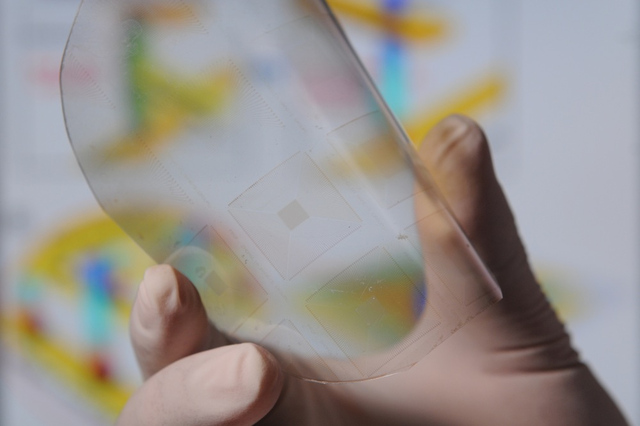Humans are already starting to sympathize with robots,
but US and Chinese researchers want to give robotics an even more
humanlike touch — quite literally. A pair of scientists at the Georgia
Institute of Technology (Georgia Tech) and a colleague at the Chinese
Academy of Sciences in Beijing have developed a new kind of 3D circuit array
capable of providing the touch sensitivity of a human fingertip. "This
would be useful in applications such as artificial/prosthetic skin,
smart biomedical treatments and intelligent robotics in which the arrays
would sense what was in contact with them," explains a Georgia Tech news release.
"relies on a phenomena known as the 'piezoelectric effect'"
The technology relies on a phenomena known as the "piezoelectric effect,"
or the electric charge given off by certain materials — namely quartz —
when placed under mechanical stress. In this case, the researchers
strung nanowires made of zinc-oxide together into transistors capable of
producing the effect, which they dubbed "taxels." Then, they took over
8,000 of these taxels and linked them to create the circuit arrays.
Because each taxel is on its own capable of generating a readable,
controllable electrical signal, the resulting arrays displayed extremely
high degrees of touch sensitivity.
“This could make artificial
skin smarter and more like the human skin," said Zhong Lin Wang, one of
the Georgia Tech researchers behind the arrays. Wang and his colleagues
been working on practical applications for this type of technology for
the past several years, integrating piezotronics into lithium ion batteries last year, for example, and publishing a fundamental theory behind piezotronics. Their latest results were published this week in the journal Science.

No comments:
Post a Comment